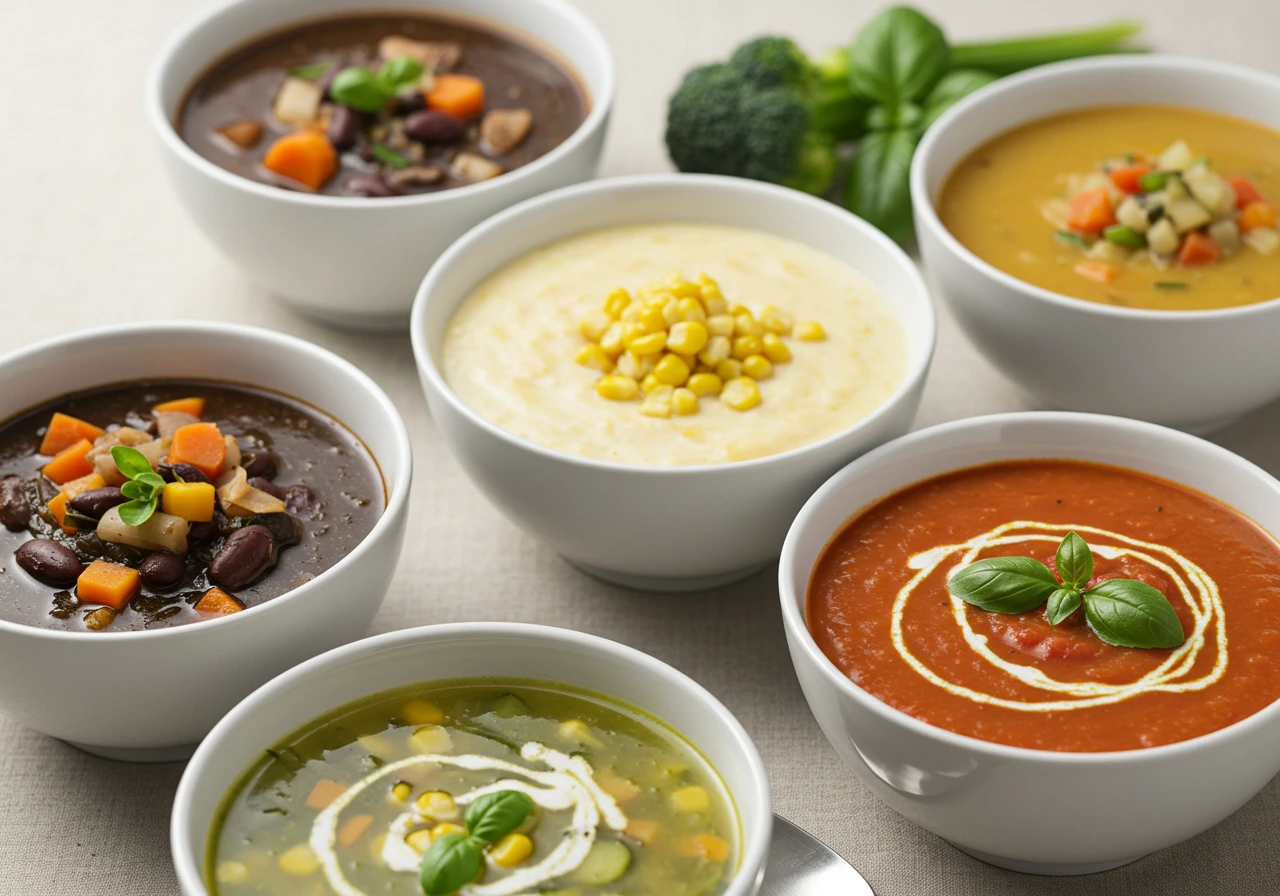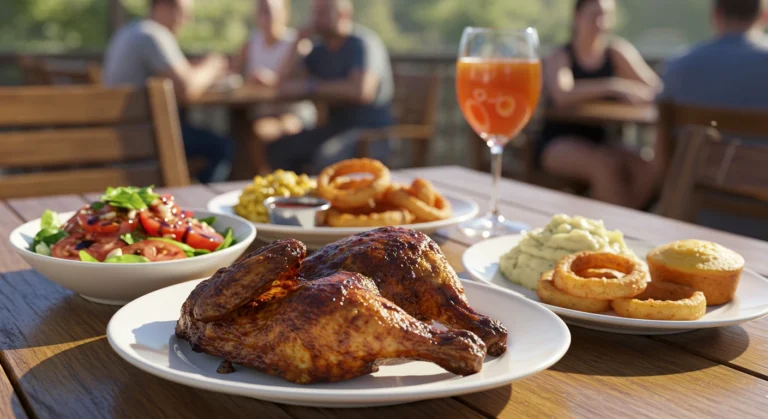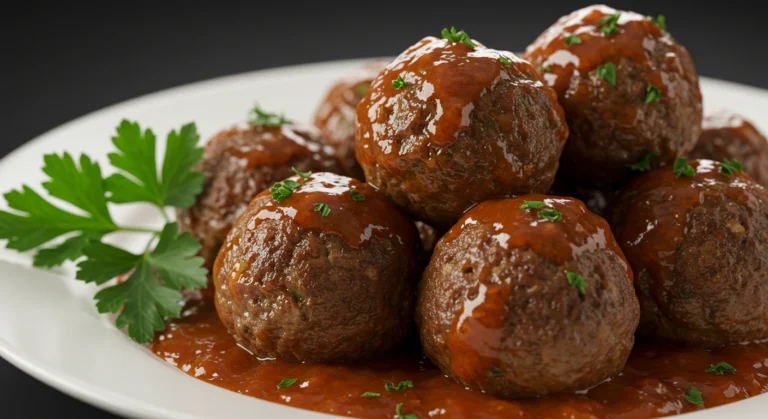5 Best Low Sodium Soups and Stews for a Healthy Meal
Table of Contents
Tired of sacrificing flavor when trying to reduce your sodium intake? Many store-bought soups and stews are loaded with salt, making it challenging to maintain a heart-healthy diet without compromising on taste. These five low sodium soups and stews will satisfy your cravings while supporting your health goals. As a nutritionist who has specialized in heart-healthy cooking for over a decade, I’ve perfected these recipes to maximize flavor while minimizing sodium content. In this guide, you’ll discover easy-to-follow recipes, ingredient substitutions, cooking techniques, and serving suggestions to help you enjoy delicious soups and stews without the salt.
Why These Low Sodium Soups and Stews Work
- Use fresh, whole ingredients to build natural flavor without added salt
- Incorporate herbs, spices, and aromatics that enhance taste without sodium
- Ready in under an hour for convenient weeknight meals
- Batch-friendly recipes perfect for meal prep and freezing
- Adaptable to various dietary needs (vegetarian, gluten-free, dairy-free)
Choosing the Right Ingredients for Low Sodium Cooking
Fresh vs. Processed Foods
When making low sodium soups and stews, fresh ingredients are your best friends. Canned vegetables, pre-made broths, and processed meats often contain hidden sodium. Opt for fresh or frozen vegetables, homemade stocks, and fresh meats to control sodium levels.
Sodium-Smart Substitutions
Replace salt with flavor-enhancing alternatives like lemon juice, vinegar, fresh herbs, spices, and sodium-free seasoning blends. Use low-sodium or no-salt-added broths as the base for your soups and stews.
Flavor Boosters Without Salt
Learn to intensify flavors naturally with ingredients like garlic, onions, fresh herbs, citrus zest, mushrooms, and roasted vegetables. These ingredients create depth and complexity without adding sodium.
Ingredients & Prep
Homemade Low Sodium Stock
Making your own stock gives you complete control over sodium content. Use roasted bones, vegetables, herbs, and minimal salt for a flavorful base. Alternatively, look for certified low-sodium or no-salt-added commercial options.
Vegetable Preparation
Cut vegetables into uniform sizes to ensure even cooking. Consider how each vegetable releases flavor—root vegetables like carrots and potatoes benefit from longer cooking times, while tender greens should be added near the end.
Protein Options
Choose fresh meats, beans, or legumes rather than processed or cured options. Rinse canned beans thoroughly to reduce sodium content by up to 40%.
5 Best Low Sodium Soups and Stews
1. Hearty Vegetable Minestrone
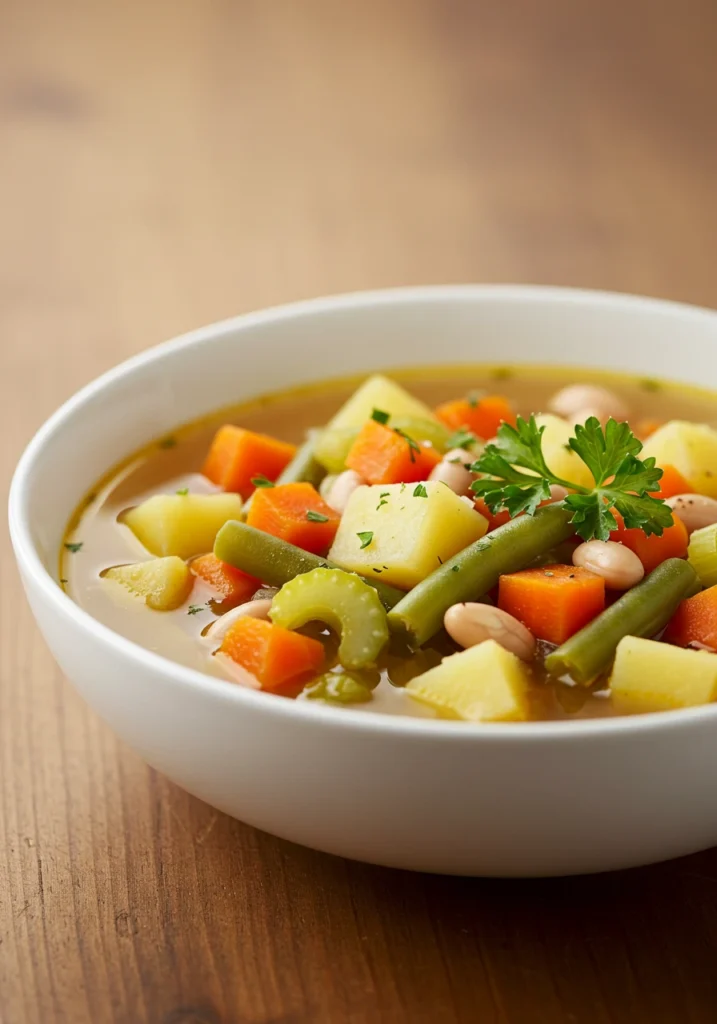
This Italian classic is naturally low in sodium but packed with vegetables, beans, and herbs. Use fresh tomatoes instead of canned and homemade vegetable stock for the base. Finish with fresh basil and a splash of balsamic vinegar to brighten flavors without adding salt.
2. Tuscan White Bean and Kale Stew

Creamy without cream, this hearty stew features cannellini beans, Tuscan kale, and aromatic vegetables. Rosemary, thyme, and a parmesan rind (optional) create depth of flavor. Finish with lemon zest and a drizzle of good olive oil.
3. Roasted Butternut Squash Soup
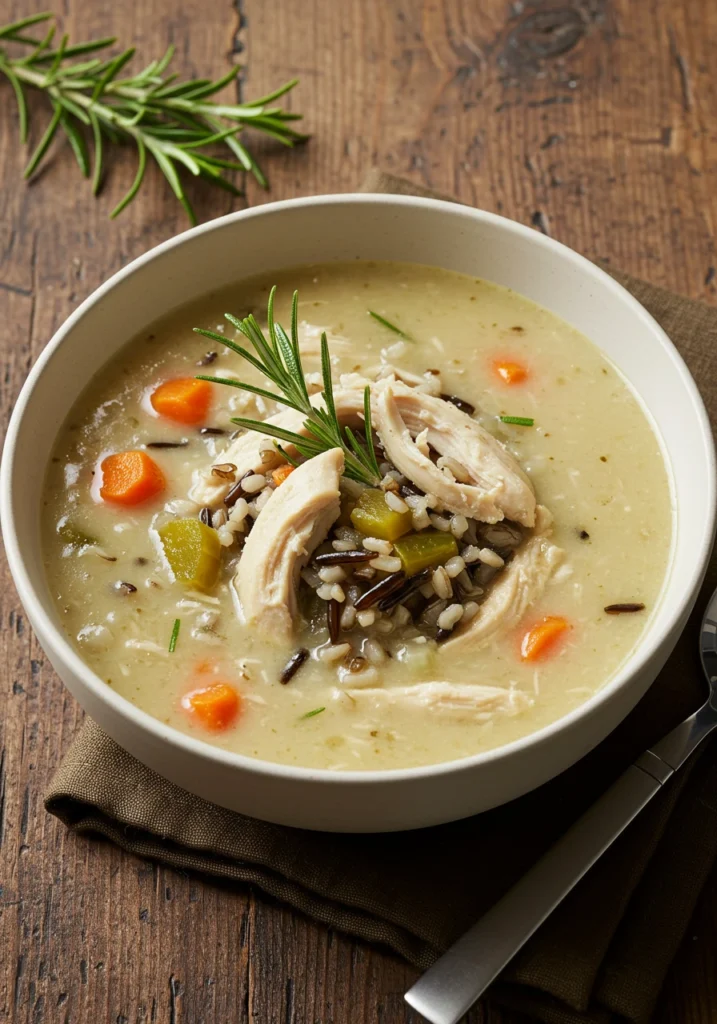
Natural sweetness from roasted squash eliminates the need for salt. Caramelized onions, fresh ginger, and warming spices like cinnamon and nutmeg enhance flavor, while a touch of apple cider vinegar brightens the soup without adding sodium.
4. Herb-Infused Chicken and Wild Rice Soup

A comforting classic made heart-healthy. Use skinless chicken breasts, fresh herbs, and homemade chicken stock. Wild rice adds wonderful texture and nutty flavor, while a splash of lemon juice at the end lifts all the flavors.
5. Mushroom and Barley Stew
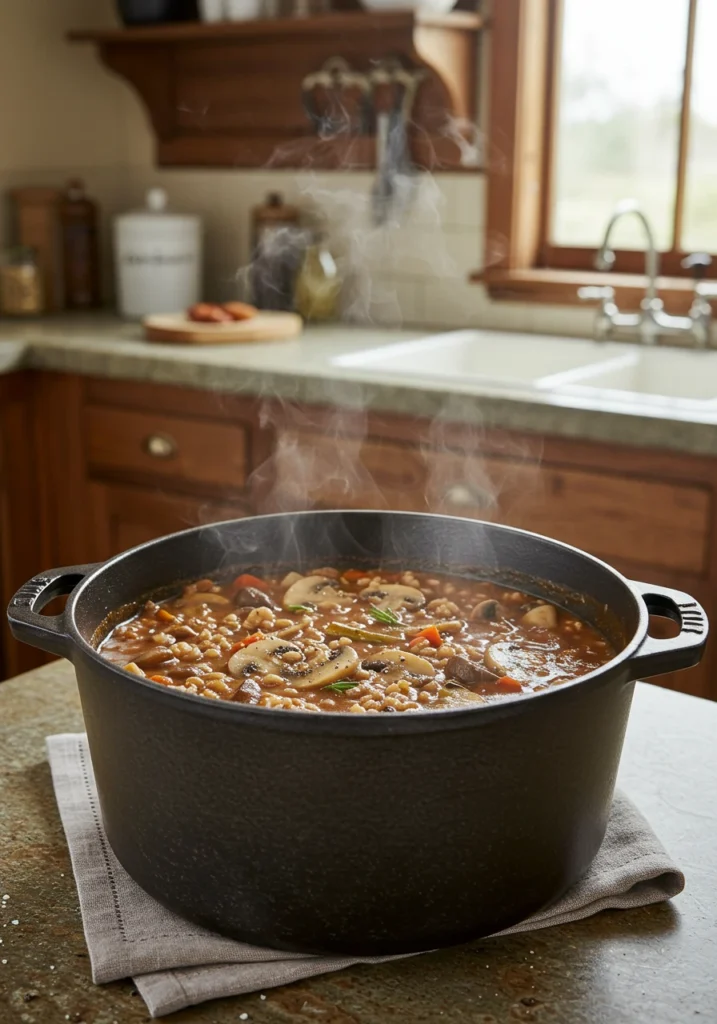
Umami-rich mushrooms provide meaty satisfaction without high sodium. Use several mushroom varieties for complex flavor, add pearl barley for heartiness, and finish with fresh thyme and a splash of sherry vinegar to enhance the earthy notes.
Step-by-Step Cooking Instructions
Pre-Cooking Prep
Building flavor starts before the heat. Sauté aromatics like onions, garlic, carrots, and celery until softened and fragrant. This creates a flavor foundation that reduces the need for salt later.
Cooking Method
Most soups and stews follow a similar method: sauté aromatics, add herbs and spices, incorporate main ingredients, add liquid, and simmer until flavors meld and ingredients are tender. Pressure cookers or slow cookers are excellent options for developing deep flavors.
Adjusting Consistency
For thicker stews, use less liquid or add natural thickeners like puréed vegetables, potato, or a small amount of cornstarch slurry. For thinner soups, add more low-sodium broth.
Final Seasoning
Always taste before serving. Instead of salt, consider adding fresh herbs, a squeeze of lemon or lime juice, a dash of vinegar, or freshly ground black pepper to brighten and enhance flavors.
Pro Tips for Perfect Low Sodium Soups and Stews
Layering Flavors
Build flavor in stages by sautéing aromatics first, using fresh herbs during cooking, and adding bright elements like citrus or vinegar at the end. Roasting vegetables before adding them to soups intensifies their natural sweetness.
Recommended Tools
A heavy Dutch oven or stock pot distributes heat evenly. An immersion blender helps create creamy soups without dairy. Fresh herb scissors make adding herbs quick and easy.
Storage & Reheating
Most soups and stews taste even better the next day as flavors continue to develop. Store in airtight containers in the refrigerator for up to 4 days or freeze for up to 3 months. Reheat gently on the stovetop, adding a splash of water or broth if needed.
Flavor Variations
Global Inspirations
Adapt these low sodium recipes with global flavor profiles:
- Mediterranean: Add olives, capers, and oregano
- Asian: Incorporate ginger, lemongrass, and star anise
- Latin: Use cumin, oregano, and finish with fresh cilantro
Dietary Adaptations
- Vegetarian/Vegan: Use vegetable broth and plant-based proteins
- Gluten-Free: Substitute rice, quinoa, or gluten-free pasta for wheat-based ingredients
- Dairy-Free: Use coconut milk or pureed vegetables to create creaminess
Seasonal Adjustments
Modify recipes based on seasonal produce for maximum flavor and nutrition. Summer soups might feature fresh tomatoes and zucchini, while winter versions could incorporate root vegetables and hearty greens.
Serving Suggestions
Pair your low sodium soups and stews with whole grain bread, a fresh green salad, or roasted vegetables. For beverages, consider unsweetened iced tea with fresh herbs, sparkling water with citrus, or a light red wine like Pinot Noir that complements hearty stews.
Garnishing elevates both presentation and flavor. Try fresh herbs, a dollop of yogurt, toasted seeds, or a drizzle of extra virgin olive oil to add complexity without sodium.
FAQs
Can I use my slow cooker for these recipes?
Yes! Slow cookers are excellent for developing flavors in low sodium cooking. Add ingredients according to recipe instructions, then cook on low for 6-8 hours or high for 3-4 hours.
How can I tell if my soup has enough flavor without adding salt?
Let your soup rest for 5-10 minutes before tasting. If it seems bland, add acid (lemon juice or vinegar), herbs, or spices rather than salt. Sometimes, soup needs time for flavors to develop fully.
Are low sodium soups good for meal prep?
Absolutely! Most soups and stews freeze beautifully and often taste better after flavors have had time to meld. Portion into individual containers for quick, healthy meals throughout the week.
Conclusion
Creating delicious low sodium soups and stews doesn’t mean sacrificing flavor. By using fresh ingredients, aromatic herbs, and clever cooking techniques, you can enjoy hearty, satisfying meals that support your heart health. Start with these five recipes and experiment with your own variations to discover new favorites. Join thousands of home cooks who’ve transformed their health while enjoying delicious meals with these low sodium recipes. Looking for more heart-healthy cooking ideas? Check out our collection of Low Sodium Mediterranean Dishes that make healthy eating a pleasure.

